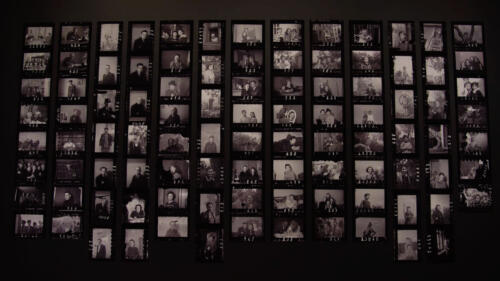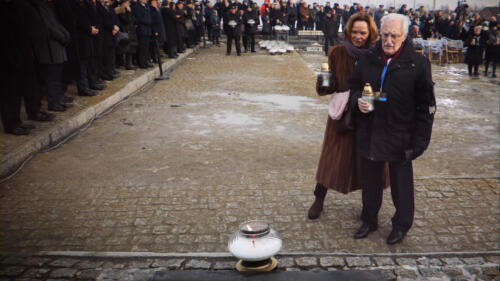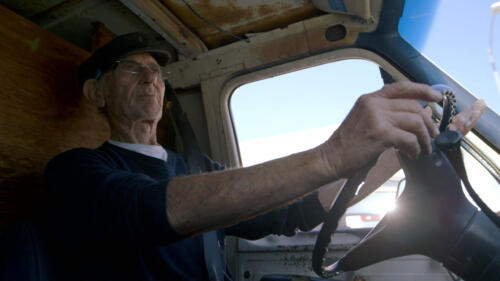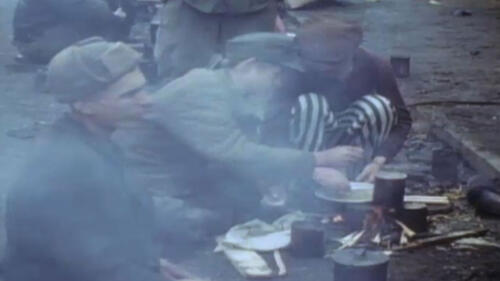Holocaust
During the Holocaust, Nazi Germany exterminated some 6 million Jews, as well as millions of Roma people, political dissenters, homosexuals and others, in one of the most horrific war crimes ever committed.
Featured Overview
During the Holocaust, Jewish photographer Henryk Ross used his camera as a tool of resistance against the Nazi regime by documenting the harsh realities inside the ghetto of Lodz, Poland.
3:52m watch

Scott Barbour/Getty Images
Featured Overview
During the Holocaust, Jewish photographer Henryk Ross used his camera as a tool of resistance against the Nazi regime by documenting the harsh realities inside the ghetto of Lodz, Poland.
3:52m watch
Start Here

Anti-Semitism, sometimes called history’s oldest hatred, is hostility or prejudice against Jewish people. The Nazi Holocaust is history’s most extreme example of anti-Semitism. Anti-Semitism did not begin with Adolf Hitler—Anti-Semitic attitudes date back to ancient times.

The “Night of Broken Glass” was a Nazi pogrom that foreshadowed the Holocaust.

While some had been driven from the camp, thousands of emaciated prisoners had been left behind to die.

In the wake of the Holocaust, the Allies set up the camps throughout Europe to offer temporary homelands to traumatized populations.
Holocaust Remembrance Day
History Shorts: The Moment Behind International Holocaust Remembrance Day
Of all the horrific days throughout the Holocaust, the day many choose to remember it by is the anniversary of a liberation.
1:04 watch
3 Heroes of the Holocaust
Explore All Related Topics

Adolf Hitler oversaw an Olympic Games that was staged to glorify himself and Nazi-led Germany.

Oskar Schindler saved more than 1,000 Jews during the Holocaust—while undeniably heroic, his real story is also more complicated.

In the wake of the Holocaust, the Allies set up the camps throughout Europe to offer temporary homelands to traumatized populations.
Of all the horrific days throughout the Holocaust, the day many choose to remember it by is the anniversary of a liberation.
1:04m watch

The wrenching images and first-hand testimonies of Dachau recorded by U.S. soldiers brought the horrors of the Holocaust home to America.

While some had been driven from the camp, thousands of emaciated prisoners had been left behind to die.

How many were killed, how many children were sent to the site and the numbers of people who attempted to escape are among the facts that reveal the scale of crimes committed at Auschwitz.

Long before he rose to become a ruthless dictator, the Nazi leader was a struggling young artist.

Publishers were initially reluctant to publish the teenage author’s chronicle of life during the Holocaust. They thought readers were not ready to confront the horrors of World War II.

Horrifying medical experiments on twins helped Nazis justify the Holocaust.

The more than 900 passengers of the M.S. St. Louis were denied entry by immigration authorities in multiple countries in the lead-up to the Holocaust.

“My Yiddishe Momme" became an anthem for new immigrants in the 1920s. Victimized Jews later sang it in concentration camps.

The controversial pope stayed silent on the fate of Jews during the Holocaust.

Normal Danes sprang into action and pulled off an astounding feat.

The desperate parents of Kindertransport refugees paid a terrible price for their lives.

The 1938 pogrom sparked harsh criticism, but not much action.

Mobs attacked 7,500 Jewish-owned stores and businesses and killed 96 people.

Seventy years after Americans liberated Dachau, Joshua Kaufman and Daniel Gillespie reconnect.
Joshua Kaufman shares his outlook on life since being liberated from Dachau on April 29, 1945.
2:30m watch

Allied troops entering former Nazi territory at the close of World War II confronted heartbreaking scenes of unthinkable atrocities.

A diplomat who used the power of paperwork, a 16-year-old girl who shot Nazis from her bicycle and a teacher who hid Jewish children in baskets were among those who risked their lives to save others during World War II.

Freddie and Truus Oversteegen sometimes ambushed Nazi officers from their bicycles—and never revealed how many they had assassinated.

It was knit by the girl's grandmother, who was then killed by Nazis, and it kept the child warm as the child endured incredible hardship.

Carl Lutz managed to save half of Budapest's Jewish population by exploiting the Nazi's respect for paperwork.

Waitlists, bombings and restrictive U.S. immigration policies thwarted Anne Frank's family's chances of escaping the Holocaust.

A recently released book details an overheard conversation with Nazi officials as new evidence for an old theory.

The new material reveals a different side of the murdered teenage author.

The Treblinka uprising put a stop to the Holocaust’s second deadliest camp.

Johan van Hulst saved hundreds of lives—but was haunted by his inability to do more.

Anti-Semitism, sometimes called history’s oldest hatred, is hostility or prejudice against Jewish people. The Nazi Holocaust is history’s most extreme example of anti-Semitism. Anti-Semitism did not begin with Adolf Hitler—Anti-Semitic attitudes date back to ancient times.

The Sonderkommando participated in the Nazi killing machine—and made sure the world knew what happened at Auschwitz.

In the winter of 1945, the Nazis tried to destroy the evidence of the Holocaust.

Eugenics is the now-discredited practice of “improving” the human race and reducing the impact of hereditary disease by mating people with desirable traits.

Ernst vom Rath’s murder triggered a two-day pogrom against German Jews.

Multiple people have been suspected of informing the Nazis of the Franks' hiding place, while one theory suggests it may have simply been bad luck.

When Helmuth Hübener learned the truth about Nazi Germany, he spread the word—and paid the ultimate price.

Henryk Ross risked his life to take thousands of secret photographs inside the ghetto at Lodz, Poland.

She lived an unspeakable hell. As both an inmate and head women’s doctor at Auschwitz, Dr. Gisella Perl saved hundreds of lives with her bare hands.

The “Night of Broken Glass” was a Nazi pogrom that foreshadowed the Holocaust.

Find out more about the largest, armed Jewish resistance movement of World War II.
As Allied troops move across Europe, they encounter the horror of thousands of prisoners in Nazi camps.
2:17m watch

Raoul Wallenberg (1912- c. 1947) was a Swedish businessman-turned-diplomat based in Budapest, who was responsible for the rescue of thousands–some estimates are as high as 100,000–of Hungarian Jews from extermination by the Nazis.

Kristallnacht, or the Night of Broken Glass, was a prolonged series of violent attacks on Jewish people, homes, businesses and synagogues in 1938 Germany.

Auschwitz, also known as Auschwitz-Birkenau, opened in 1940 and was the largest of the Nazi concentration and death camps.

Dachau, a concentration camp that opened in Nazi Germany in 1933 after Adolf Hitler seized power, held thousands of Jews, political prisoners and others.

German Jewish teenager Anne Frank died in the Holocaust, but her memoir from her family's two years in hiding, published as "The Diary of Anne Frank," has been read by millions worldwide.

The Holocaust was the persecution and murder of millions of Jews, Romani people, political dissidents and homosexuals by the German Nazi regime from 1933-1945.

What is Genocide? The word “genocide” owes its existence to Raphael Lemkin, a Polish-Jewish lawyer who fled the Nazi occupation of Poland and arrived in the United States in 1941. As a boy, Lemkin had been horrified when he learned of the Turkish massac...

Ethnic cleansing is the attempt to get rid of—through deportation, displacement or even mass killing—members of an ethnic group.






